 |
| |
Tartu
How to get there?
Sightseeing
Live video
WIFI/Internet
Weather
Phone numbers
Libraries
Conference Dinner
| |
TARTU (www.visittartu.com) is internationally known for its symbol - one of the oldest universities in Europe. Many international scientific conferences are held here, in the second largest city of Estonia. events.
Tartu = German and Swedish: Dorpat; Latvian: Terbata; Russian: Derpt or Yuryev.
Tartu, with its population of ~100 000, lies in an area of 38.8 square kilometres. It is also the centre of Southern Estonia. The Emajõgi River, which connects the two largest lakes of Estonia, flows for the length of 10 kilometres within the city limits and adds colour to the city.
The first written records of Tartu date from 1030.
An old Hanseatic town Tartu also calls itself The City of Good Thoughts and The Athens of the River Emajõgi, and a song claims Tartu to be the most beautiful town in Estonia!
Tartu is known as a city of education. In addition to the University of Tartu, founded in 1632, two more large institutions of higher education are located here: the Estonian University of Life Sciences and the Baltic Defence College. Tartu has a total of 16 institutions of higher education. It is also the seat of the Ministry of Science and Education.
In Tartu lives the Spirit of Tartu – a real ghost! Perhaps the university that opened here in 1632 be held accountable for its birth. If you want to go to university at all, then Tartu is the place — such is the opinion of several generations. Tartu would not be Tartu without its university, and Tartu’s bookshops are clearly the best in Estonia.
Research by the Statistics Board “Innovative Activity in Estonian Enterprises” demonstrates that the businessmen of Tartu are the most innovative in the country. The coming years will bring the development of knowledge-based enterprises in Tartu, which will mean more seminars and events, increasing conference tourism. Two thirds of Estonian biotechnology companies and the largest Estonian software companies are based in Tartu.
The places, where you will be spending your time in Tartu, are mostly covered with Wifi, so when taking a break, or having a cup of coffee you can easily check your e-mails, or surf the net. |
| |
| How to get there? | |
Tartu is located 189 km south of the capital Tallinn and it takes approximately 2,5 hours to get from Tallinn to Tartu.
Buses leave from Tallinn to Tartu in every 15-30 minutes. Bus schedules are available online at http://www.bussireisid.ee. Tartu bus station is situated in the city centre.
Time table for fast trains: http://www.edel.ee/ |
| |
| Sightseeing | | |
| |
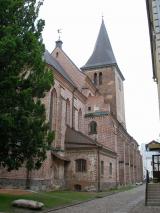 | |
Tartu Jaani Church
Medieval architectural monuments probably form the most valuable part of the comparatively rich architectural heritage of Estonia. Among the former, Tartu Jaani (St Johns) Church in its own turn occupies a special place. It does so, first and foremost, because of its sculptures. Both the interior and the exterior of the church are covered with numerous decorative details. All of those are made of terracotta, i.e. burnt clay. Originally, there must have been more than a thousand of those, and even though many of them have been destroyed over the ages, the number of the retained ones is still impressive. |
| |
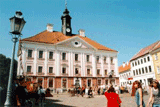 | |
The present building of Town Hall is already the third one on the same site. In comparison with the long history of Tartu its buildings are relatively new: very seldom you can see buildings which date back to earlier times than the last quarter of the 18th century which can be explained by numerous devastating wars and fires. The Great Fire of 1775 ravaged almost the whole central part of Tartu. After the fire Tartu began to obtain its present configuration and the present Town Hall was also built. The Town Hall of Tartu was designed by the then master – builder of the town Johann Heinrich Bartholomäus Walter from Rostock. The cornerstone was laid in 1782. Although the Town Hall was festively opened in 1786, the finishing touches were made until 1789.
The Town Hall of Tartu was built at the time when the style of Early Classicism reached the Nordic countries, including Estonia, replacing the earlier styles of Baroque and Rococo. The contest between different styles is also reflected in the Town Hall of Tartu. |
| |
 | |
Tartu Toy Museum, located in an old wooden building in the heart of Old Tartu, takes the grown-ups back to the bright days of their childhood and offers children many fascinating activities and much to feast their eye on.
The permanent exposition displays toys, which have been played with by Estonian children throughout history. In addition, there are artistic dolls, souvenir dolls made by various nations and traditional Fenno-Ugric toys. The museum has a playroom and a crafts room, but there is much exciting to look at and do also in the exhibition rooms. Alternate exhibitions and children events are held at the museum.
A rare collection of animation and theatre puppets and cartoon-film sketches made in Estonia and abroad in the past fifty years are displayed in the house of film and theatre dolls in the museum yard.
|
| |
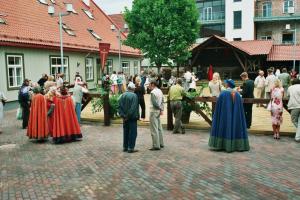 | |
St. Anthony Craftsmen's Guild and Workshops
The Little Guild or St. Anthony’s Guild employing the craftsmen of Tartu is first mentioned in 1449, but it is likely that it existed even earlier. Guild was lead by Alderman, who was appointed by the town council and eight guild elders. Little Guild was prohibited from trading, only handicraft was allowed.
|
| |
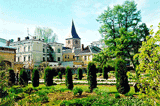 | |
The Botanical Garden of the University of Tartu was founded in 1803, near what is now the Vanemuine Old Theatre House. In 1806 the garden was relocated to more suitable site, on the ruins of the ancient city wall and fortifications near the river and ponds. The first director of the Garden was Prof. Gottfried Albrecht Germann and the first chief gardener in duty was Johann Anton Weinmann. The first master plan of the Garden was made by Weinmann and it serves till nowadays. In 1811 Prof. Carl Friedrich Ledebour was nominated the director. Under his active leadership, the collections of the Garden were enriched by many new species, collected from Siberia and other unexplored regions of the Russian Empire, and firstly described by Ledebour. Most of them reached Western Europe via our Garden. Many other famous botanists and his successors as Ernest Rudolf Trautvetter, Karl Johan Maximowicz, Alexander Georg von Bunge, Edmund August Friedrich Russow, Nikolai Kuznetsov, Theodor Lippmaa have contributed to the development of this marvellous Garden. The Garden contains several monuments gratefully reviving the memory of our forerunners’ contribution. |
| |
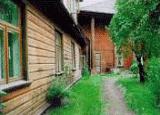 | |
Supilinn - Soup Town
Would You like to see a slum of Tartu characteristic to Tartu of the previous century, in almost authentic form? If yes, go toward Supilinn located in the northwestern part of the town. |
| |
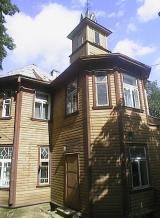 | |
Karlova, with its more than 400 wooden buildings, represents one of the sights of Tartu. In big and wealthier cities of Northern Europe such settlements have given way to more modern stone buildings a long time ago but fortunately, they still exist in Tartu.
|
| |
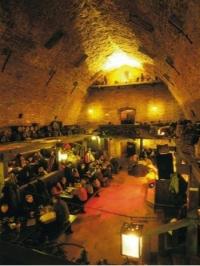 | |
The Gunpowder Cellar (Estonian: Püssirohukelder) is a beer restaurant in Tartu, Estonia opened in 2000. The name is derived from the restaurant's location: it is situated in a 18th century gunpowder cellar constructed in 1768–1778 on order of Catherine II of Russia on site of an earlier fort, making use of the natural valley and pre-existing very thick brick walls for added safety. It was used as a gunpowder cellar until 1809. Until 1982 it served as a storage room for many different enterprises, and was later developed into a eating place.
The restaurant is a popular meeting place among Tartu's student population. It boasts regular cultural programme, including a number of plays of the theathre Vanemuine.
Püssirohukelder is the highest pub in the world (10,2 m high), see...
|
| |
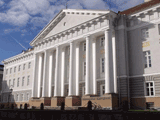 | |
University of Tartu
On 30 June 1632, the King Gustav II Adolf of Sweden signed the Foundation Decree of Academia Dorpatensis which enables us to mark the beginning of our university's distinguished history.
The first students immatriculated between 20-21 April 1632. The opening ceremony of Academia Dorpatensis (Academia Gustaviana) took place on 15 October in the same year.
The main building of Tartu University is one of the most outstanding examples of classical architecture in Estonia. The main building was built in 1804-1809 according to university architect Johann Wilhelm Krause’s plans.
|
| |
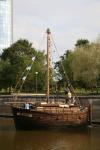 | |
Emajõgi Riverland
..the Suur-Emajõgi (Big Emajõgi) or just the Emajõgi, 100 km long, is the only outflow of Lake Võrtsjärv and has been an important communication and trade route between Võrtsjärv and Peipsi lakes over centuries.
|
| |
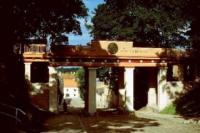 | |
Toome Hill with an old Cathedral, the ruins of were partly rebuilt to house the University Library in the 19th century, and now house the Museum of Tartu University History. The Tähetorn Observatory, the Angel’s Bridge & the Devil’s Bridge, the old building of the Department of Anatomy, university clinics and several other monuments can be found in the Toome Hill Park.
|
| |
| Live video | |
The camera placed on the balcony of the Town Hall Square 12 building (view to the Town Hall Square, Town Hall and Town Hall Square 3 building)
http://lv.raad.tartu.ee:10105/
The camera placed on the corner of the Town Hall Square 3 building (view to the fountain of the Town Hall Square)
http://lv.raad.tartu.ee:10201/
The camera placed on the first floor of the Town Hall (view to the Town Hall Square in the direction of the Arched Bridge)
http://lv.raad.tartu.ee:10001/
|
| |
| WIFI / Internet | |
Laptop users will be glad to know that, thanks to techsavvy locals and the demand from the student crowd, downtown Tartu is absolutely covered with wireless internet zones (WIFI spots) and use at most of them is free.
Just look for the WIFI symbol in this guide´s cafe´, bar, hotel and restaurant listings to see which palces have the service. WIFI access areas can be found on the web page www.wifi.ee.
Visitors with WAP-capable phone can try out the city´s new WAP portal: wap.tartu.ee, which lists useful information.
|
| |
| Weather | |
Weather can be windy and hangeable with possible rainfall.
For the latest forecast please see the homepage http://weather.ee/tartu or homepage of the Weatherstation of the Institute of Environmental Physics of the University of Tartu.
|
| |
Important
phone numbers | |
| Area code for phone calls from abroad: +372 |
|
| Emergency calls | 112 |
| Police | 110 |
| Ambulance | 112 |
| Customs info | 880 0814 |
| Bus station | 12550 |
| City transport 12012 |
| Airport | + 372 7 309 210 |
| Information of the city government | + 372 7 361 101 |
| Information of South-Estonia | + 372 7 40 40 20 |
| Tartu Tourist Information Centre | + 372 7 442 111 |
|

